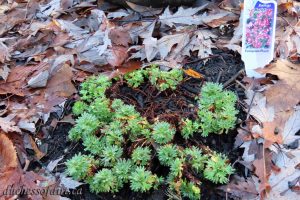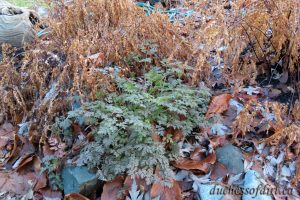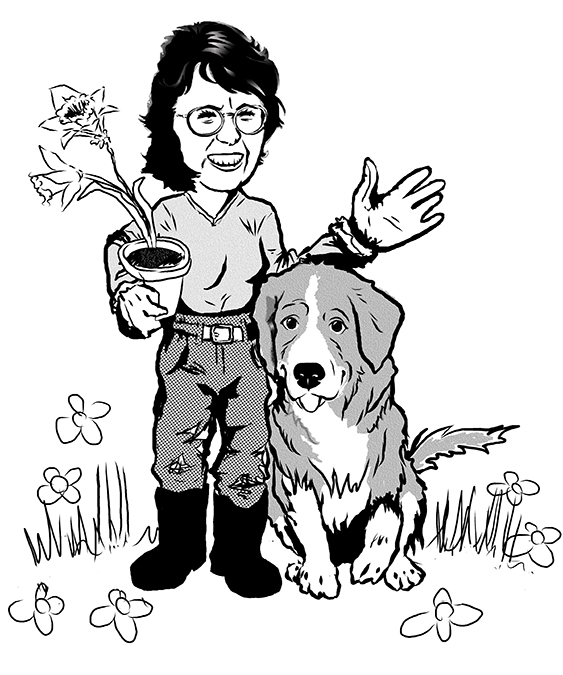Teaser Tuesday
by Leslie Cox; Tuesday; January 30, 2024
It looks like this new plant addition that I purchased last spring has made it through its first winter. So happy!
Now, if I can only figure out its full name. I had thought it was a new cultivar of Saxifraga x arendsii called ‘Merlot’. However, when I google “Saxifraga merlot” nothing comes up with that exact name. Hmmm. Another plant mystery to be solved.
Quote of the Week
Foto Friday
Did you know?
by Leslie Cox; Tuesday; January 22, 2024
Did you know…
…the heaviest tomato ever grown, to date, weighed in at an incredible 11.62 lb (5.284 kg)? Its circumference was very close to 3 ft (90 cm), measuring 32.5 inches (82.55 cm).
Del and Julie Faust grew this giant tomato from a packet of 9.06 Brown 2021 seeds and the weighing took place at the Stillwater Harvest Festival in Minnesota on October 8, 2022, duly supervised by the festival officials, as well as representatives from the Great Pumpkin Commonwealth.
Chart: Vegetable Seed Viability & Characteristics
| Vegetable Seed Viability & Characteristics | ||||
| Vegetable | Seed Viability | Pollination | Isolation Distance | |
| Asparagus | P | 3 years | insect | 1 mi / 1.6 km |
| Bean, broad | A | 3 years | self | 50 ft / 15 m |
| Bean, French | A | 3 years | self | 50 ft / 15 m |
| Bean, runner | A | 3 years | self | 50 ft / 15 m |
| Beet | B | 4 years | wind | yes |
| Broccoli | B | 5 years | insect | yes |
| Brussels sprouts | B | 5 years | insect | yes |
| Cabbage | B | 5 years | insect | yes |
| Carrot | B | 3 years | insect | 1 mi / 1.6 km |
| Cauliflower | B | 5 years | insect | yes |
| Celeriac | B | 5 years | insect | yes |
| Celery | B | 5 years | insect | yes |
| Chinese cabbage | A | 5 years | insect | yes |
| Chive | P | 2 years | insect | yes |
| Corn, sweet | A | 1 – 2 years | wind | yes |
| Cowpea | A | 3 years | self | limited |
| Cucumber | A | 5 years | insect | yes |
| Eggplant | A | 5 years | self | limited |
| Garlic | A | |||
| Horseradish | P | |||
| Jerusalem artichoke | P | |||
| Kale | B | 5 years | insect | yes |
| Kohlrabi | B | 5 years | insect | yes |
| Leek | B | 3 years | insect | yes |
| Lettuce | A | 5 years | self | limited |
| Lima bean | A | 3 years | self | limited |
| Muskmelon | A | 5 years | insect | yes |
| NZ spinach | A | 5 years | wind | yes |
| Okra | A | 2 years | self | limited |
| Onion | B | 1 – 2 years | insect | yes |
| Parsley | B | 1 – 2 years | insect | yes |
| Parsnip | B | 1 – 2 years | insect | yes |
| Pea | A | 3 years | self | no |
| Peanut | A | 1-2 years | self | limited |
| Pepper | A | 4 years | self | limited |
| Popcorn | A | 1 – 2 years | wind | yes |
| Potato | A | self | no | |
| Pumpkin | A | 5 years | insect | yes |
| Radish | A | 5 years | insect | yes |
| Rhubarb | P | |||
| Rutabaga | B | 5 years | insect | yes |
| Salsify | B | 2 years | self | no |
| Soybean | A | 3 years | self | limited |
| Spinach | A | 5 years | wind | yes |
| Squash, summer | A | 5 years | insect | yes |
| Squash, winter | A | 5 years | insect | yes |
| Swiss chard | A | 4 years | wind | yes |
| Tomato | A | 4 years | self | limited |
| Turnip | A | 5 years | insect | yes |
| Watermelon | A | 5 years | insect | yes |
Updated on January 15, 2024



